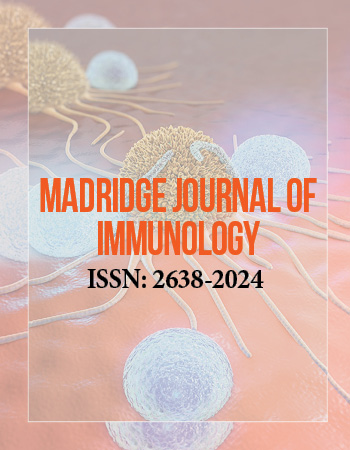International Conference on Immunology and Immunotechnology
November 1-3, 2017 Barcelona, Spain
Immunomodulatory Effects of Anti-Tumor Necrosis Factor α: Relationships with Behcet Disease Clinical Characteristics
1Laboratory of Cellular Biology and Molecular(LBCM), Algeria
2Department of Biology, Faculty of sciences, University of Boumerdes, Algeria
3Ophthalmology Service, Algeria
Objectives: To investigate the Th1 cytokines and nitric oxide production in different types of manifestations of Behcet disease and the effect of anti-TNFα treatment on IL12 and NO induction in PBMC from Algerian patients with BD.
Methods: Peripheral venous blood was drawn from 93 patients with different type of manifestation of Behcet disease and from 63 controls. Cytokine concentration was measured by ELISA and NO levels were assessed by modified Griessʼs method. Cells were cultured with or without anti-TNF-α. IL-12 levels were measured by specific enzyme-linked immunosorbent assay. Nitric oxide levels were evaluated using a modified Griess method.
Results: Our results showed that patients with active disease had significant elevation of IL-12 and NO concentrations compared with controls. Cytokine and NO production profiles are specific to the clinical manifestation. Treatment with anti-TNF α did not reduce significantly the number of PBMC secreting IL12 in all type of manifestation studied. Further, anti-TNF-α induced significantly reduced production of NO in cell culture supernatants; a favorable clinical response to anti-TNF α was associated with Uveits and Neurobehcet manifestations.
We observed that cytokine and NO production profiles are specific to the clinical manifestation, this specificity suggests the involvement of different specific T cell populations in the regulation of immune responses occurring during active Behcet disease. These cells are probably specific to local auto-antigens.
A single infusion of anti-TNF significantly did not reduce the number of PBMC secreting IL12 in all type of manifestation studied. Anti-TNFα treatment induced a significant decrease the levels of nitric oxide production this modulation was specific to the clinical profile, a favorable clinical response to anti-TNF α was associated with Uveits and Neurobehcet manifestations.
Conclusion: These results suggest the implication of the IL12 and nitric oxide in physiopathology of BD. Our findings indicate that TNF- α plays a pivotal role in BD, and that anti-TNF- α therapy reduces NO production and may play a protective role against inflammation specially in uveites and neurobehcet manifestations.
Biography:
Dr Messaoudene Djamel is a chief at the Department of Biology, Faculty of Sciences, University of Boumerdes (UMBB) and Senior Research Fellow at the Laboratory of Cellular and Molecular Biology (LBCM), Cytokines and NO-synthase team, University of Sciences and Technology Houari Boumedien, Algeria.


